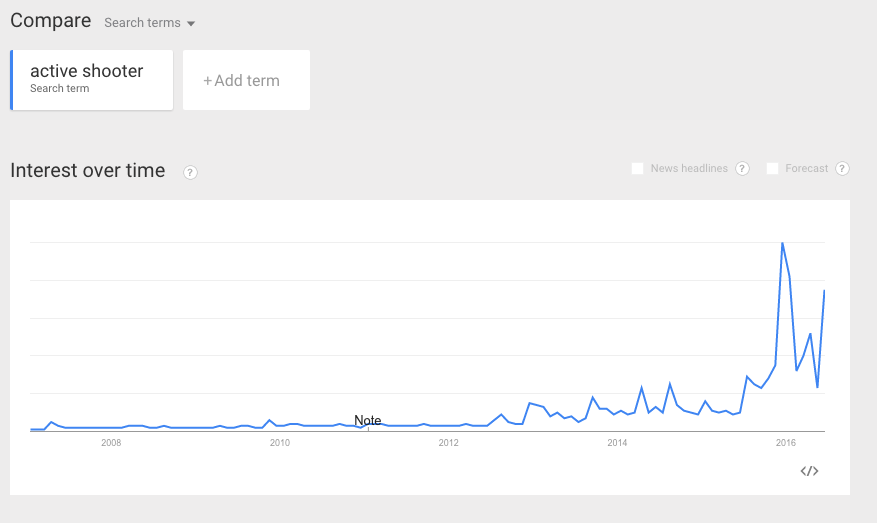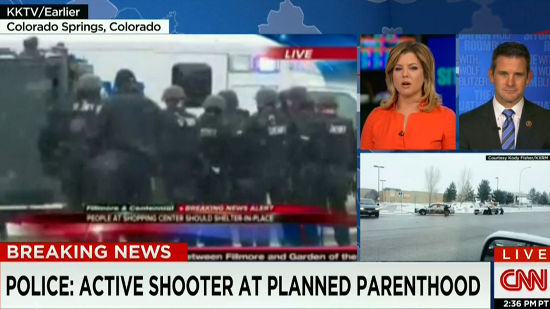The Two Words That Have Become a Part of America's Daily Vocabulary

By:
On Thursday, America was again alerted of a possible "active shooter" situation — this time at a military base in Maryland, which ended up being a false alarm. As journalist Shaun King remarked on Twitter, the phase has, at this point, become a "daily part of the American lexicon."
Joint Base Andrews relayed information about the situation on its official Twitter account. Around 9 a.m., reports of an active shooter prompted officials to place the base on lockdown. "The base was scheduled to conduct an active shooter exercise, however, reports of a real-world active shooter situation were reported," one tweet read.
Officials lifted the lockdown hours later after they determined that there was no threat. But in a country where gun violence is a daily concern, the threat of a "real-world active shooter situation" is always looming ominously overhead. That was King's point. The phrase "active shooter" has become chillingly common in America.
I looked up "active shooter" in Google Trends. The search volume for the phrase has spiked since 2012.
 Google Trends - google.com
Google Trends - google.com
In an article for The New York Times Magazine, Charles Homans reflects on how the phrase has evolved in America. Before the Columbine High School shooting in 1999, when the "active shooter" concept took root in media and law enforcement circles, it did not have the meaning nor consequence that it does today.
"Even after Columbine, it took several years for 'active shooter' to fully shed its quotation marks and explanatory parentheticals and take its place in the national lexicon," Homans writes. "That it has done so — less than an hour after the Pulse attack began, Twitter users had identified it as an 'active shooter' situation — says something not just about the proliferation of mass shootings in America but also about the way technology has transformed our experience of them."
 CNN
CNN
Columbine was the first televised active shooter situation in U.S. history. It gave shape to the blurry concept of an individual, or multiple individuals, opening fire with the intent to do harm to innocents. Now we have social media, feeding the public details about these incidents (sometimes unverified, sometimes false alarms) as they unfold.
"The active shooter is never far away here; there are too many guns in America for us to ever delude ourselves into thinking otherwise," Homans writes. "And the footage is always streaming, optimized for our many platforms."
